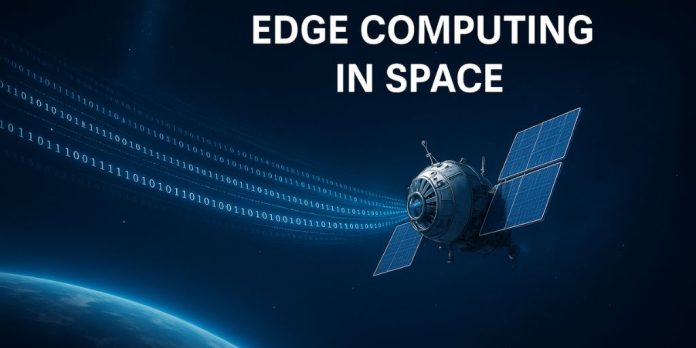In the vast, unforgiving environment of space, every second counts and every bit of data matters.
Edge computing is rapidly transforming how space missions collect, process, and act upon data, offering a solution to the growing challenges of latency, bandwidth limitations, and real-time decision-making beyond Earth’s atmosphere.
This article dives deep into the role of edge computing in space exploration, revealing its benefits, challenges, real-world applications, and what the future holds.
What is Edge Computing?
Edge computing refers to the practice of processing data closer to the location where it is generated rather than sending it back to a centralized data center (or in the case of space, to Earth).
In traditional systems, satellites, rovers, and spacecraft collect massive amounts of raw data and then transmit it to Earth for analysis.
However, edge computing enables these systems to analyze, filter, and act on data locally, reducing reliance on constant communication with Earth.
Key Feature: Edge devices can make autonomous decisions in real-time without waiting for ground control instructions.
Why Space Missions Need Edge Computing
Space missions, especially deep-space explorations, face unique challenges:
- High latency: Signals traveling between Earth and distant spacecraft can experience delays ranging from minutes to hours.
- Limited bandwidth: There’s a cap on how much data can be transmitted across millions of kilometers.
- Data overload: Modern space instruments generate terabytes of data daily, far more than can be transmitted to Earth.
- Autonomous operations: Missions like Mars rovers must make immediate navigation and hazard-avoidance decisions without waiting for Earth-based instructions.
Edge computing directly addresses these problems by empowering spacecraft and satellites with onboard intelligence.
Key Benefits of Edge Computing in Space
1. Reduced Communication Delays
By processing data locally, spacecraft can respond instantly to environmental changes or system anomalies.
This is crucial for real-time decision-making, especially in robotic missions and future human-crewed deep-space explorations.
Example: A Mars rover detecting a hazardous obstacle can autonomously adjust its route without waiting for Earth instructions.
2. Bandwidth Optimization
Instead of sending back all raw data, spacecraft can filter and prioritize the most critical information.
This reduces the volume of data transmissions, conserving precious bandwidth and saving power.
3. Enhanced Data Security
Processing sensitive information locally reduces the exposure of data to potential cyber threats during long-distance transmissions.
4. Increased System Resilience
Edge computing systems can detect and recover from faults autonomously, ensuring mission continuity even during communication blackouts with Earth.
Real-World Applications: Edge Computing in Action
NASA’s Mars 2020 Perseverance Rover
The Perseverance rover uses edge computing and onboard AI to analyze its surroundings during the “Sky Crane” landing maneuver, dramatically improving landing precision without real-time Earth guidance.
Earth Observation Satellites
Satellites equipped with edge processing capabilities can analyze environmental data (like wildfire detection or crop health monitoring) in near real-time, sending only meaningful alerts to ground stations.
Asteroid Mining Missions (Future Prospects)
Future missions aiming to mine asteroids for resources will require autonomous decision-making, navigation, and material analysis, all enabled by edge computing.
Challenges of Implementing Edge Computing in Space
Despite its advantages, edge computing in space is not without hurdles:
1. Radiation and Harsh Environments
Space electronics must withstand extreme radiation, temperature fluctuations, and mechanical stresses.
Developing robust, fault-tolerant edge processors remains a technological challenge.
2. Power Constraints
Spacecraft operate with limited energy budgets. Edge computing hardware must be highly energy-efficient to avoid draining critical systems.
3. Software Complexity
Creating reliable, autonomous software for unpredictable space conditions is difficult. Edge AI must be capable of learning and adapting with minimal human intervention.
The Future of Edge Computing in Space Exploration
As space missions become more ambitious, with plans for Mars colonization, lunar bases, and deep-space probes. Edge computing will become indispensable.
Future advancements may include:
- Self-learning AI: Systems that evolve their decision-making capabilities based on experience.
- Swarm intelligence: Fleets of satellites or rovers working together autonomously using local edge processing.
- Quantum edge computing: Utilizing quantum processors to perform complex calculations in real-time.
Ultimately, edge computing will not just be a tool for mission success, it will be a cornerstone of humanity’s expansion into the cosmos.
Conclusion
Edge computing is redefining what’s possible in space exploration.
By processing information directly at the source, space missions can become faster, smarter, safer, and more efficient.
As technology continues to advance, future spacecraft will not just send back images or data, they’ll think, adapt, and act as pioneers on humanity’s behalf in the final frontier.

